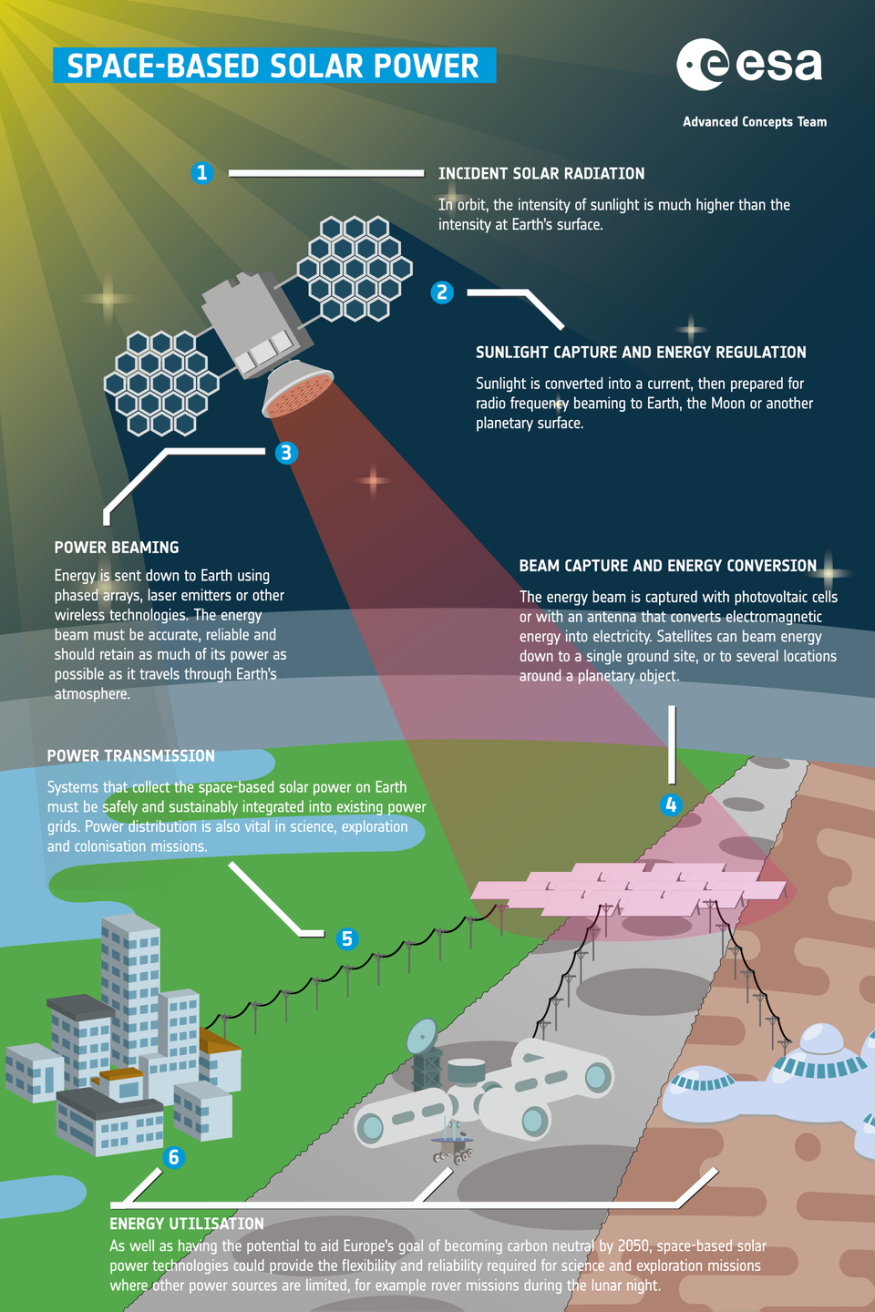The head of the European Space Agency (ESA) said Europe seriously wanted to create space-based solar power to boost its energy independence and lower greenhouse gas emissions.
"It will be up to Europe, ESA and its Member States to push the envelope of technology to solve one of the most pressing problems for people on Earth of this generation," said ESA director general Josef Aschbacher, director general of the space agency.
ESA Eyes Funding Space-Based Solar Power Program
The Solaris SBSP may harness solar energy utilizing huge solar arrays positioned in geostationary orbit, according to the most recent study from Space.Com.
This indicates that the technology for using solar electricity in orbit will be deployed at an altitude of 22,000 miles, which is where most satellites are found.
ESA explained in a statement that the demand for innovative, clean, and safe energy sources is growing, particularly as Europe moves toward Net Zero emissions. The fundamental SBSP idea is now viewed as an urgent issue.
In the past, the space agency hired consultancy companies with offices in the U.K. and Germany to research the costs and advantages of creating space-based solar power.
ESA published those studies this week to give European policymakers technical and programmatic knowledge.
Although the idea of SBSP initially surfaced in the 1960s, several nations have recently shown a lot of interest in it. While China plans to conduct in-orbit testing by the end of the decade as a first step toward a gigawatt-level system by the middle of the century, the U.K. showed interest in an SBSP system earlier this year.
While a billionaire-funded research at Caltech in Pasadena is already working on technology for harvesting solar energy gathered in orbit, NASA is also interested in exploring SBSP in the United States.

ALSO READ : Russia Teases Next-Gen Russian Orbital Service Station Design After Quitting International Space Station
Pros and Cons of Solar Energy Plan
The two consultancy studies go through the financial and technology development required to begin putting a space-based power system online, Ars Technica mentioned.
Installing solar panels in geostationary orbit could supply between 25 percent and 33 percent of the yearly power consumption for Europe, which is now estimated to be over 3,000 TWh. These technologies would be expensive to develop and implement, costing hundreds of billions of dollars.
Experts would need a constellation of several enormous satellites situated 36,000 kilometers from Earth to provide space-based solar power.
Each of these satellites would be 10 or more times heavier than the 450 metric ton International Space Station, which took over a decade to build in low Earth orbit. The final launch of these satellites' components would need hundreds or, more likely, thousands of heavy-lift rocket missions.
The sources also mention that launching a program for solar energy generation in orbit would encourage the creation of a completely reusable, super heavy lift rocket in Europe for this objective. The launch demands would be enormous, to put it simply.
Although the idea of solar energy generated in space is intriguing, it is not without its detractors. SpaceX CEO Elon Musk is one of those opposing ESA's project. He has, however, quite a reputation for being completely disdainful of technology.
"With a solar panel in orbit, you get twice the solar energy, but you've got to do a double conversion: Photon to electron to photon, back to electron," said Musk in a 2018 statement.
Physicist Casey Handmer identified four cost drivers in an online study that will render space-based solar power unaffordable: transmission losses, heat losses, logistical expenses, and a space technology penalty.
According to Handmer, the cost of solar energy generated from space is at least "three orders of magnitude" more than that of energy produced on Earth.
RELATED ARTICLE : SpaceX Rockets 'To Replace' Roscosmos' Soyuz, ESA Says
Check out more news and information on Space in Science Times.
© 2025 ScienceTimes.com All rights reserved. Do not reproduce without permission. The window to the world of Science Times.












